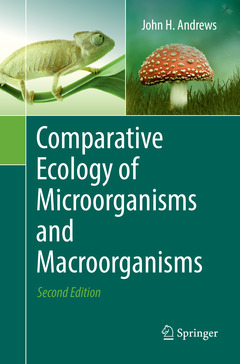Description
Comparative Ecology of Microorganisms and Macroorganisms (2nd Ed., 2nd ed. 2017)
Author: Andrews John H.
Language: English
Subjects for Comparative Ecology of Microorganisms and Macroorganisms:
Approximative price 89.66 €
In Print (Delivery period: 15 days).
Add to cartPublication date: 05-2018
Support: Print on demand
Approximative price 89.66 €
In Print (Delivery period: 15 days).
Add to cartPublication date: 06-2017
Support: Print on demand
Description
/li>Contents
/li>Biography
/li>Comment
/li>
Illustrates concepts and principles of ecological biology by referencing many forms of life
Presents interdisciplinary analogies between the biology of microorganisms and macroorganisms
Provides an expanded edition to include important ecological research over the past decade
Includes supplementary material: sn.pub/extras
These books may interest you

Molecular Microbial Ecology Manual 105.49 €



